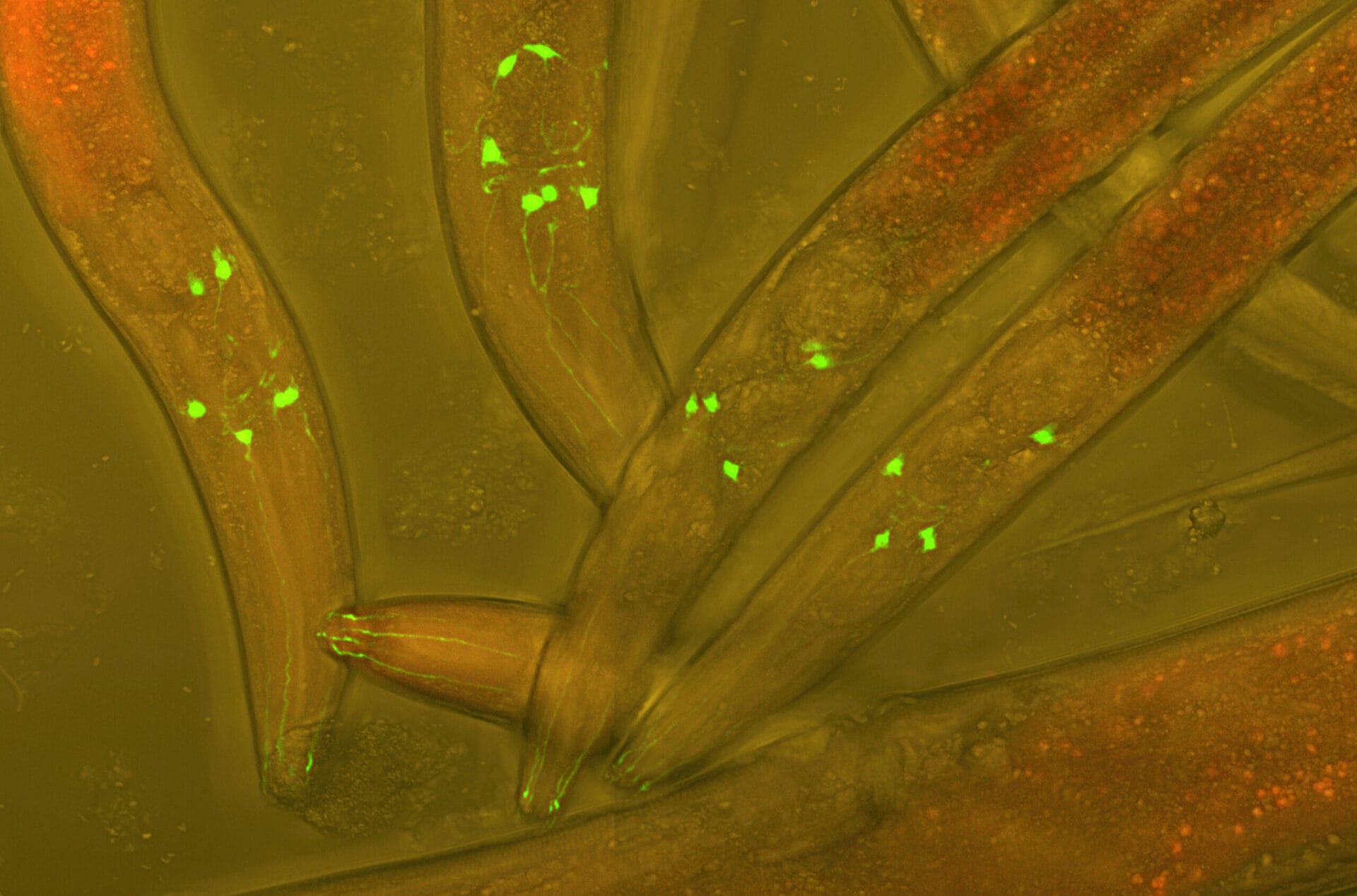Model organisms: the nematode worm
Image credit: Heiti Paves / WikiMedia Commons

While the fruit fly has a long history as a model organism, the nematode worm (Caenorhabditis elegans) has only been used as a model organism since the early 1960s.
- Model organisms are non-human species that are used in research to help us understand specific areas of biology.
- The nematode worm (Caenorhabditis elegans) has only been used as a model organism since the early 1960s.
- The worm is much simpler than humans, for example, it doesn’t have bones, a heart or a circulatory system, but it does share many genes and molecular pathways with us.
The nematode worm (Caenorhabditis elegans)
- The nematode worm, Caenorhabditis elegans, is either male or hermaphrodite (have both male and female reproductive organs), they are not female.
- The hermaphrodites self-fertilise but can also breed with the males.
- The worm is much simpler than humans, for example, it doesn’t have bones, a heart or a circulatory system, but it does share many genes and molecular pathways with us.
- Each worm is made up of about 1,000 somatic cells, a third of which are nerve cells, and about the same number of germ cells in the gonad (sex organ).
- The complete genome sequence of the C. elegans was published in 1998.
- The C. elegans genome is 100 million base pairs in length and contains a similar number of genes as humans, about 20,500 genes.

What are some of the benefits and limitations of using the nematode worm as a model organism?
Benefits of using the nematode worm
- C. elegans can be grown cheaply and in large numbers on plates containing bacteria.
- Healthy cultures of C. elegans can be frozen and then defrosted and revived when needed.
- C. elegans produce over 1,000 eggs every day.
- They have a short life cycle of only two weeks, which is useful for studying their development.
- C. elegans is a very small organism so is convenient to keep in the lab.
- The worm is transparent throughout its life so the behaviour of individual cells can be followed through its development.
- The anatomy and development of C. elegans can be examined easily under a microscope.
- A unique feature of C. elegans is that their development is very specific, cells divide and specialise in a characteristic way, so each cell can be traced back to the embryo.
- Although C. elegans is a relatively simple organism, many of the molecular signals controlling its development are also found in more complex organisms, like humans.
- Mutant forms of C. elegans, where specific genes are altered, can be produced very easily to closely study gene function.
- Many of the genes in the C. elegans genome have functional counterparts in humans which makes it an extremely useful model for human diseases.
- C. elegans mutants provide models for many human diseases including neurological disorders, congenital heart disease and kidney disease.
- C. elegans mutants can be screened with thousands of potential drugs for important diseases.
- Studying cell death or ‘apoptosis’ in the C. elegans could hold the key to counteracting the effects of ageing in humans as well as providing clues about cancer, diabetes and other diseases.
Limitations of using the nematode worm
- C. elegans has a relatively simple anatomy and therefore has limitations for use as a model organism for complex human conditions
- Being so small, it also creates challenges for experimental manipulation